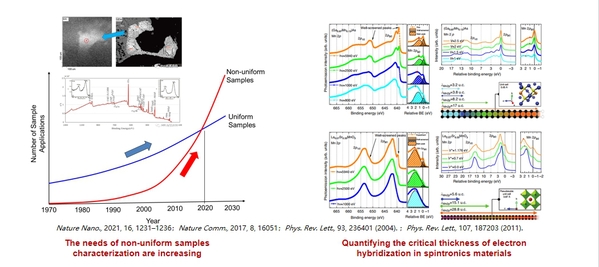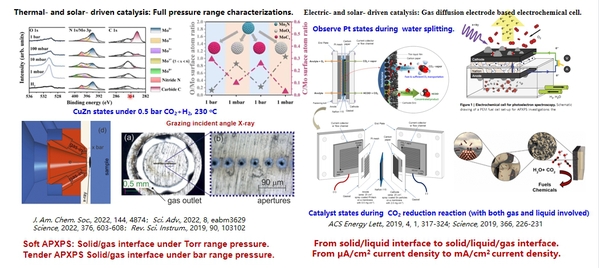- Mass Spectrometry for Energy Transformation and Astrochemistry
- Extreme Ultraviolet Electronic Structure Characterization and Lithography
- Electronic Structure Characterization for Operando Micro/Nano Devices
- High-sensitive, Space-Resolved and Time-Resolved Electron Spin Dynamics
- In-situ/Operando Soft X-ray Spectroscopy and Scattering
- Soft X-ray Ptychographic Nanoscopy
- Resonant Coherent Scattering
- High Throughput In-situ/Operando Tender X-ray Spectroscopy
- Tender X-ray Spectromicroscopy and Ptychography
- Test Beamline

A mm-scale large beam spot combined with XPS enables rapid quality screening of non-uniform samples, meeting the characterization needs of the semiconductor field. In addition, for research systems such as quantum materials, it allows probing of electronic hybridization behaviors across surface-subsurface-bulk regions.

Non-metallic elements like P, S, Cl, and K: Life substance, macromolecule, geochemical cycle
Na, Mg, Al, Si, Ca: Optoelectronic devices, minerals, and ceramic metallurgy
Transition metals like Ti, Cu, Ni, Ru, Rh, and Pd: Catalytic materials, energy storage materials.
Rare earth elements, La series and Ac series: Magnetic materials, high entropy materials
Radioactive elements like U, Th, and Ra: Important materials in military and national defense.

Tender APXPS enables the probing of solid–gas, solid–liquid, and solid–liquid–gas three phase interfaces. For solid–gas systems, the TEA endstation allows in situ measurements under high-pressure conditions up to 100 mbar and even 1 bar. For complex solid–liquid interfaces in electrochemical systems, the TEA supports in situ/operando studies of solid–liquid and solid–liquid–gas interfaces under applied electric fields, effectively filling a critical gap in the field of electrochemical research.

